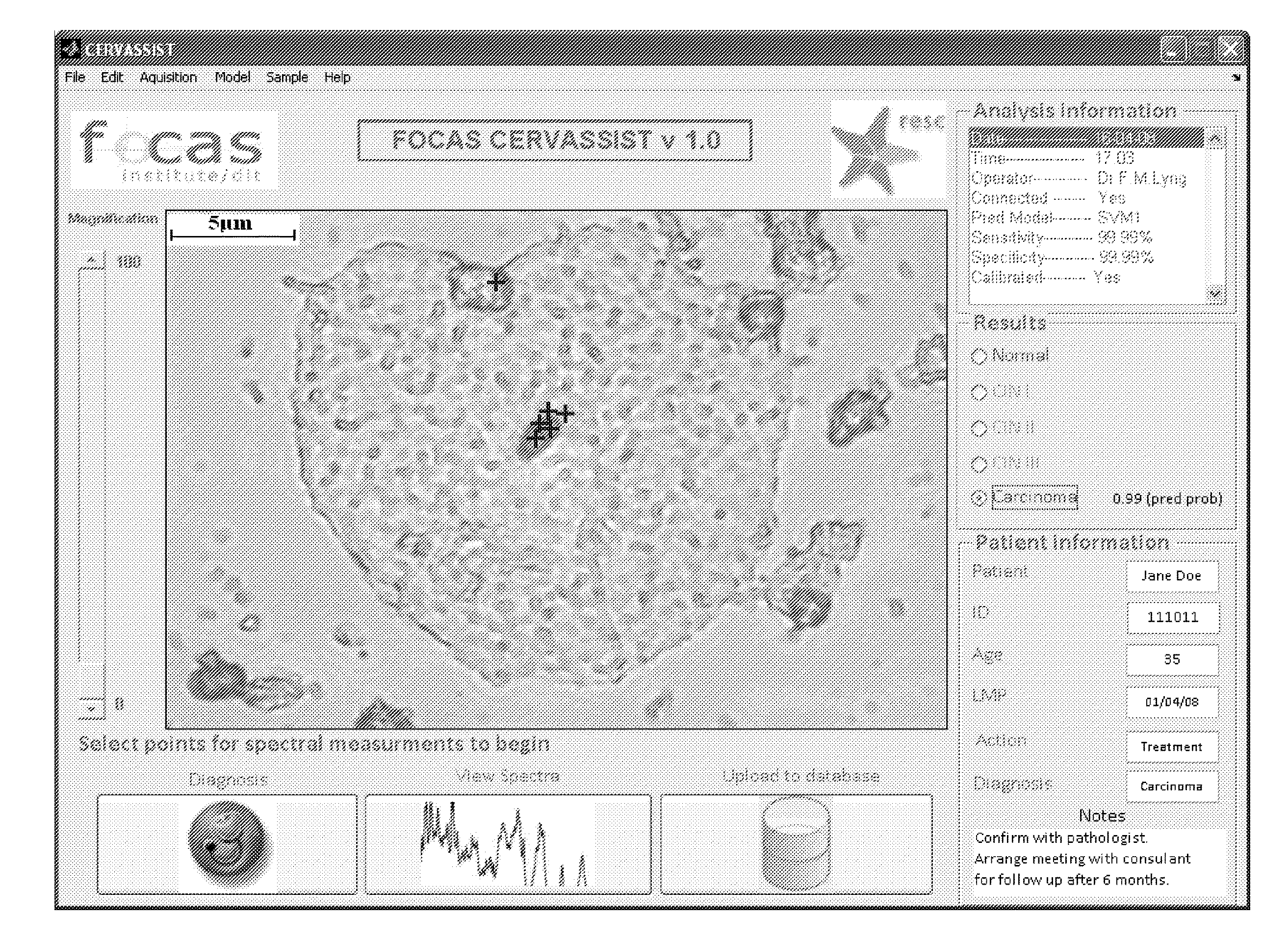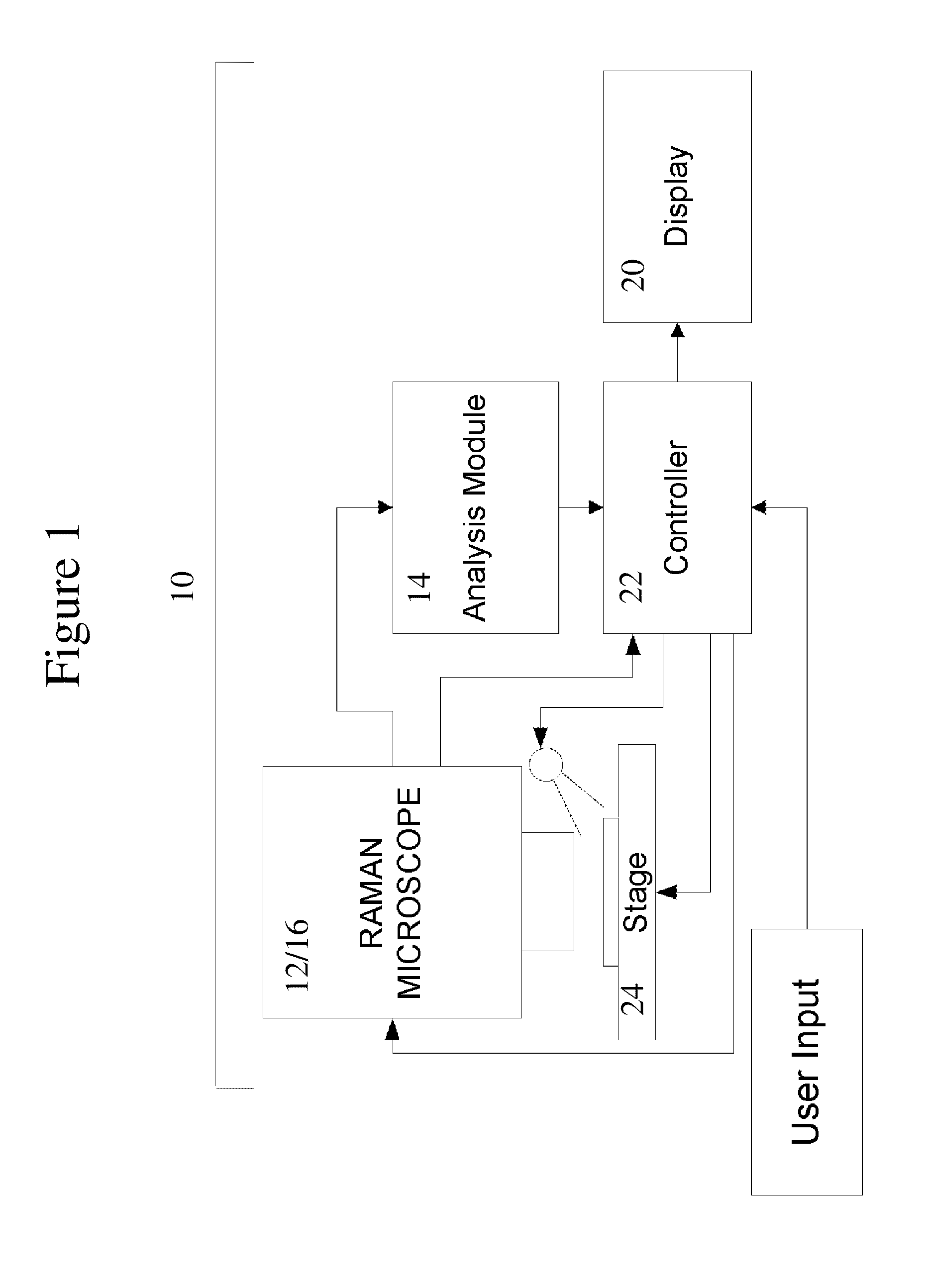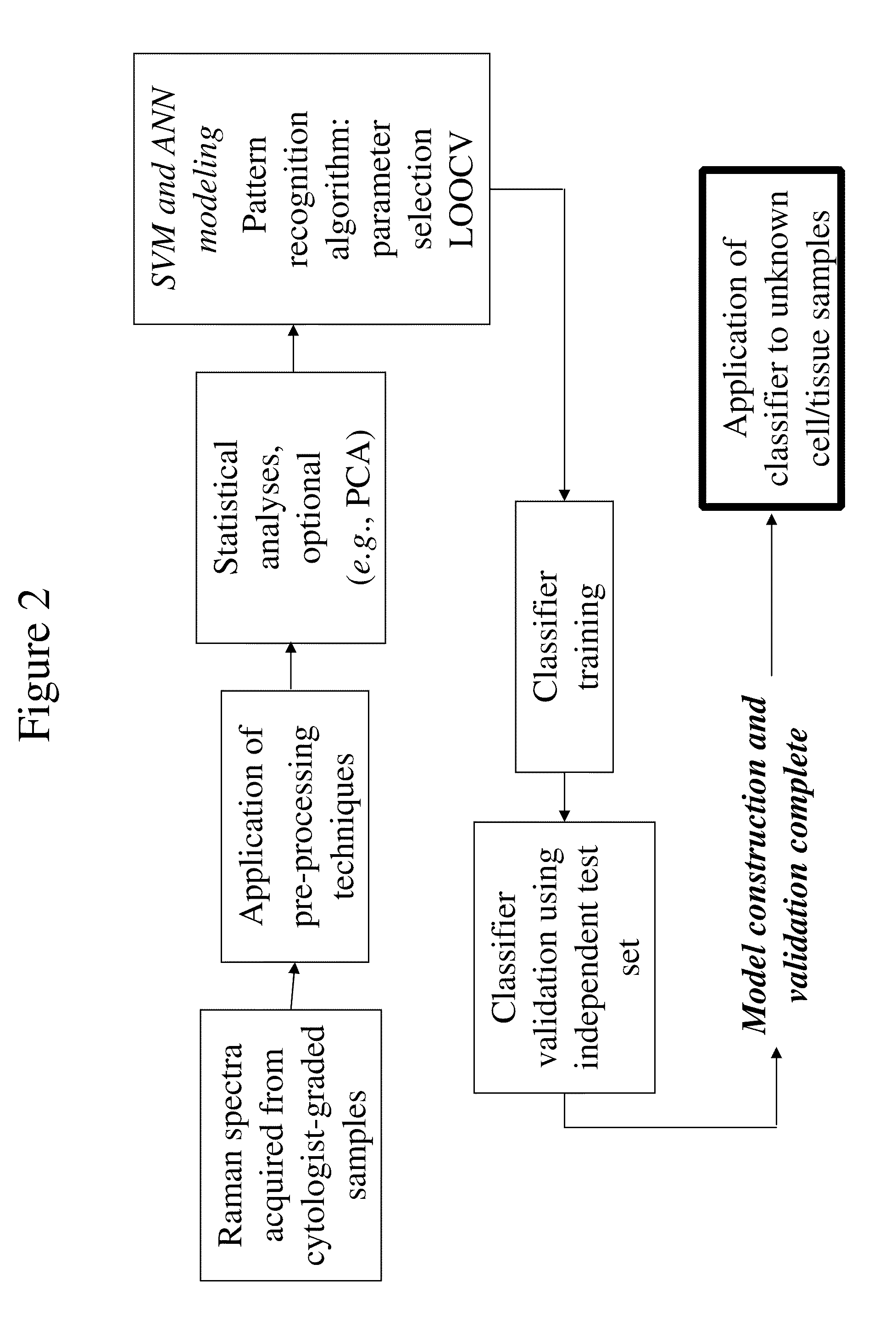Cytological method for analyzing a biological sample by raman spectroscopy
a cytological method and biological sample technology, applied in the direction of radiation pyrometry, light diagnosis, instruments, etc., can solve the problems of high cost, high degree of technical knowledge, and high cost of high resolution analysis,
- Summary
- Abstract
- Description
- Claims
- Application Information
AI Technical Summary
Benefits of technology
Problems solved by technology
Method used
Image
Examples
example 1
Comparison of Low and High Resolution Raman Spectroscopy in Normal and Abnormal Tissue Sections
[0105]Formalin-fixed paraffin preserved (FFPP) tissue samples were obtained from the National Maternity Hospital, Holles St., Dublin. Two parallel 10 μm FFPP sections were cut from each block using a microtome, mounted on glass slides and dried. Samples were dewaxed by immersion in hexane. One section from each sample (the reference section) was stained with hematoxylin and eosin and the other kept unstained for spectroscopic examination. FFPP cervical tissue sections were characterized by a consultant pathologist at the National Maternity Hospital, Holles St., Dublin, and the samples consisted of 20 normal and 20 invasive carcinoma sections from 40 patients. Of the 20 carcinoma samples, 10 samples were identified as having various grades of cervical intraepithelial neoplasia (CIN), which were also marked for examination.
[0106]An Instruments S.A. (now Horiba Jobin Yvon) Labram 1B Raman spe...
example 2
Comparison of Low and High Resolution Raman Spectroscopy in Normal and Abnormal Smears
[0111]Cervical cytology samples were obtained from the National Maternity Hospital, Holles St., Dublin and the Coombe Women and Infants University Hospital, Dublin. Samples were collected by scraping of the cervix using the THINPREP® Pap Test Cervex-Brush protocol. Cervical cells were fixed in PRESERVCYT® solution (Cytyc Corporation, Marlborough, USA).
[0112]The cells were transferred onto a microscopic slide using a CYTOSPIN® centrifuge (Cytospin3, Shandon, USA). The samples were left to air dry and were analyzed unstained. After Raman analysis, the samples were stained with the Papanicolaou stain and coverslipped. The cells from which Raman spectra were acquired were re-visited and assessed by a cytologist.
[0113]Raman spectra were acquired and subjected to data analysis, as described in Example 1. For the low resolution spectroscopy of the smear samples, a support vector machine (SVM) model was tr...
example 4
[0115]A mixed population of normal and abnormal cells (held in a liquid preservative) were consolidated into a solid mass by centrifugation at a speed of 1200 RPM for 8 minutes. The supernatant was then removed. The pellet was placed on a slide, and the slide was placed in the system described above in Examples 1 and 2. The pellet was aligned, and a representative spectrum for the pellet (rather than an individual cell) was obtained using low resolution Raman spectroscopy. The representative spectra was then compared with a library of reference spectra of abnormal cells, as described above in Examples 1 and 2. Approximately 30% of the cells were identified as abnormal.
PUM
 Login to View More
Login to View More Abstract
Description
Claims
Application Information
 Login to View More
Login to View More - R&D
- Intellectual Property
- Life Sciences
- Materials
- Tech Scout
- Unparalleled Data Quality
- Higher Quality Content
- 60% Fewer Hallucinations
Browse by: Latest US Patents, China's latest patents, Technical Efficacy Thesaurus, Application Domain, Technology Topic, Popular Technical Reports.
© 2025 PatSnap. All rights reserved.Legal|Privacy policy|Modern Slavery Act Transparency Statement|Sitemap|About US| Contact US: help@patsnap.com



